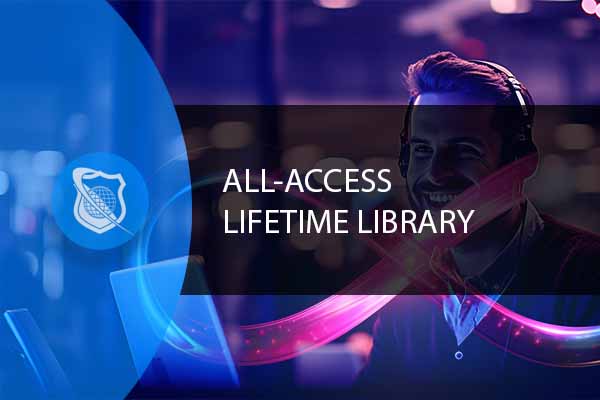Optimizing IT Education with Audio Video Integrations
In the rapidly evolving landscape of information technology education, integrating advanced audio video (AV) technologies has become essential for creating dynamic, engaging, and effective learning environments. As digital-native students expect interactive and multimedia-rich experiences, traditional lecture-based classrooms often fall short in fostering deep understanding and practical skills. By leveraging AV integrations, educational institutions can transform their IT programs, enhance student participation, and better prepare learners for real-world scenarios. This comprehensive guide explores how AV technologies are revolutionizing IT education, the benefits they offer, and best practices for designing and implementing effective AV-enabled learning spaces.
From interactive whiteboards and virtual labs to seamless remote collaboration tools, the strategic deployment of AV systems not only modernizes the classroom but also supports diverse learning styles and facilitates innovative teaching methods. Whether you’re an educator, IT administrator, or curriculum designer, understanding the significance of AV integration is crucial for staying ahead in an increasingly digital world. The following sections will delve into the role of AV in transforming traditional education, the advantages it provides, and practical steps for leveraging cutting-edge AV solutions to optimize IT training programs.
The Role of Audio Video Integration in Modern IT Education
Transforming Traditional Classrooms into Interactive Learning Spaces
Traditional classrooms, often characterized by static lectures and passive learning, are being reshaped through AV integration into highly interactive environments. Modern AV tools such as smart whiteboards, digital projectors, and real-time video conferencing enable instructors to deliver content that is visually engaging and technologically immersive. For example, an IT instructor can demonstrate complex coding techniques using an interactive touchscreen, allowing students to follow along and participate actively. Such environments also support the flipped classroom model, where students review content at home via multimedia resources and engage in hands-on activities during class time.
This transformation facilitates a more engaging and participatory learning experience, breaking down barriers between theoretical knowledge and practical application. Educational spaces equipped with AV technology foster collaboration, creativity, and critical thinking—skills vital for success in the IT industry. As a result, students gain not only technical expertise but also confidence in using advanced tools essential for modern workplaces.
The Importance of Multimedia Tools in Engaging Digital-Native Students
Today’s students are digital natives, accustomed to multimedia-rich environments like social media, gaming, and online streaming. To maintain their interest and ensure effective learning, IT educators must incorporate multimedia tools into their teaching strategies. AV integration provides a spectrum of multimedia content—videos, animations, simulations, and interactive modules—that cater to varied learning preferences. For instance, a virtual lab simulation allows students to experiment with network configurations in a safe, controlled environment, making abstract concepts tangible and understandable.
Moreover, multimedia tools enhance retention by appealing to visual and kinesthetic learners, making complex topics like cybersecurity or cloud computing more accessible. Incorporating AV technology thus aligns educational practices with student expectations, fostering a more engaging and effective learning process.
Bridging the Gap Between Theoretical Knowledge and Practical Application
One of the key challenges in IT education is connecting theoretical concepts with real-world applications. AV technologies play a critical role in bridging this gap by enabling practical demonstrations, virtual labs, and real-time problem-solving exercises. For example, using video conferencing with remote industry experts allows students to observe live troubleshooting sessions, gaining insights into real-world scenarios they might encounter in their careers.
Additionally, AV systems support project-based learning, where students collaboratively design, implement, and evaluate IT solutions in simulated environments. These hands-on experiences deepen understanding and build the skills necessary for employment in competitive tech sectors. Ultimately, AV integration makes IT education more relevant, experiential, and aligned with industry needs.
Key Benefits of Audio Video Integration in IT Education
Improved Student Engagement and Participation
AV technology significantly enhances student engagement by transforming passive listening into active participation. Interactive whiteboards, live polls, and real-time feedback tools encourage students to contribute their ideas, ask questions, and collaborate on projects. Such active involvement leads to better understanding, increased motivation, and higher retention rates.
For example, in a cybersecurity class, students might analyze live network traffic using AV-enabled tools, fostering a hands-on approach that keeps them invested in the learning process. This active engagement is crucial for developing practical skills and critical thinking essential for IT professionals.
Facilitating Remote and Hybrid Learning Models
The rise of remote work and hybrid education models has underscored the importance of robust AV systems. High-quality video conferencing, screen sharing, and live streaming enable instructors to deliver lessons to students anywhere, ensuring continuity of education. Virtual labs and cloud-based collaboration platforms allow remote students to participate in hands-on exercises seamlessly.
For instance, a university offering cloud computing courses can host live demonstrations accessible to students worldwide, fostering inclusivity and broadening access to IT education. AV integration thus supports flexible learning environments adaptable to evolving educational needs.
Supporting Diverse Learning Styles Through Multimedia Content
Different students have varied learning preferences—some learn best through visual aids, others through kinesthetic activities or auditory explanations. AV technologies facilitate a multi-sensory approach, delivering content through videos, interactive simulations, and audio recordings. This diversity ensures that all learners can access and comprehend complex IT concepts effectively.
For example, a virtual reality module simulating a data center environment allows kinesthetic learners to explore physical layouts, while narrated tutorials cater to auditory learners. Such inclusivity enhances overall learning outcomes and prepares students for diverse real-world scenarios.
Enhancing Collaboration Among Students and Instructors
AV systems foster a collaborative learning environment by enabling real-time communication and resource sharing. Video conferencing tools, shared digital workspaces, and interactive displays encourage teamwork, peer-to-peer learning, and instructor engagement. Students can work on joint projects, troubleshoot together, and receive immediate feedback, which mirrors industry practices in agile development and collaborative problem-solving.
This collaborative approach not only improves technical skills but also develops soft skills such as communication, teamwork, and adaptability—traits highly valued in the IT sector.
Designing an Effective AV-Enabled Educational Space
Assessing the Specific Needs of IT Courses and Curricula
Before deploying AV systems, educational institutions must analyze their specific course requirements and pedagogical goals. For example, courses focused on networking may need high-resolution displays and robust audio-visual recording capabilities, while coding classes might benefit from interactive whiteboards and screen sharing tools. Identifying the types of content, interaction modes, and collaboration methods essential for each course ensures that AV investments align with learning objectives.
Stakeholder input from instructors, students, and IT staff is vital during this assessment to understand the challenges and opportunities unique to each program. A needs-based approach guarantees that AV infrastructure enhances the curriculum rather than becoming an unnecessary expense.
Selecting Appropriate AV Hardware
Choosing the right hardware is critical for creating a functional, reliable, and scalable AV environment. Key components include projectors or large-format displays for visual presentations, high-quality microphones and speakers for clear audio, and touchscreens or interactive whiteboards for real-time engagement. Integration with existing IT infrastructure and compatibility with various devices should also be prioritized.
Case in point, a modern IT classroom might feature 4K projectors for detailed visualizations, wireless microphones for instructor mobility, and interactive panels for student participation. These tools should be durable, user-friendly, and capable of supporting future technological upgrades.
Creating Flexible, Scalable Setups for Different Teaching Scenarios
Educational spaces should be designed with flexibility in mind, accommodating various teaching styles and class sizes. Modular furniture, movable screens, and wireless AV solutions facilitate quick reconfiguration for lectures, workshops, or hands-on labs. Scalability ensures that campuses can expand their AV capabilities as technology advances or as new courses are introduced.
For example, a room equipped with a central control system allows instructors to seamlessly switch between different AV sources, adjust lighting, and manage multiple displays—streamlining the teaching process and enhancing the learning experience.
Ensuring Accessibility and Ease of Use for Instructors and Students
Intuitive interfaces and accessible hardware are essential for maximizing AV system utilization. Training sessions, clear signage, and support resources help reduce technical barriers and encourage adoption. Features such as voice-activated controls, remote management, and automated calibration simplify operation and maintenance.
Accessibility considerations also include ensuring that AV content complies with standards for learners with disabilities, such as captioning for videos and audio descriptions for visual content. An inclusive approach guarantees that all students benefit equally from AV-enabled environments.
Implementing Cutting-Edge AV Technologies for IT Training
Interactive Whiteboards and Touchscreens for Real-Time Coding Demonstrations
Interactive whiteboards and large touchscreens are transforming traditional coding and network design classes. Instructors can demonstrate live coding sessions, visualize algorithms, and annotate diagrams in real-time, fostering immediate student engagement. These tools support collaborative problem-solving, enabling students to participate directly on the display, write code, and troubleshoot collectively.
For example, during a cybersecurity course, students can analyze live traffic logs on a touchscreen, identify vulnerabilities, and discuss mitigation strategies interactively. Such hands-on experiences deepen understanding and develop practical skills essential for IT careers.
Video Conferencing Solutions for Remote Guest Lectures and Virtual Labs
High-quality video conferencing platforms enable instructors to invite industry experts for guest lectures, conduct virtual labs, and facilitate international collaborations. These solutions should support HD video, screen sharing, breakout rooms, and recording capabilities to maximize interactivity and accessibility.
For instance, a virtual lab session on cloud configuration conducted via a platform like Zoom or Microsoft Teams allows students to follow along from remote locations, fostering a global learning community and exposing students to diverse perspectives.
Screen Sharing and Live Streaming Capabilities for Broader Reach
Screen sharing and live streaming extend the reach of IT courses beyond physical classrooms. Instructors can broadcast lectures, demonstrations, and tutorials to large audiences or remote students, creating on-demand learning resources. These capabilities also support flipped classrooms and asynchronous learning modules.
For example, a cybersecurity workshop streamed live with interactive Q&A sessions allows students worldwide to participate actively, broadening the institution’s educational impact.
3D Visualization Tools and Virtual Labs to Simulate Real-World Environments
3D visualization and virtual labs provide immersive environments for hands-on practice without the need for physical hardware. These tools simulate real-world IT infrastructure, such as data centers, network topologies, or cybersecurity scenarios, enabling students to experiment safely and cost-effectively.
For instance, virtual reality simulations can train students on disaster recovery procedures, network troubleshooting, or server management, enhancing experiential learning and reducing resource constraints.
Integrating AV Systems with Educational Infrastructure
Seamless Connectivity with Existing IT Networks and Learning Management Systems
To maximize efficiency, AV systems must integrate seamlessly with existing network infrastructure and learning management systems (LMS). This integration enables centralized control, content sharing, and data management, reducing administrative overhead and enhancing user experience. For example, AV content can be uploaded directly to LMS platforms like Moodle or Canvas, allowing students to access resources anytime.
Ensuring compatibility between AV hardware, network protocols, and LMS ecosystems is vital for creating a cohesive digital environment that supports blended learning and data-driven instruction.
Centralized Control Systems for Efficient Management of AV Resources
Centralized control systems streamline the operation of multiple AV devices through a single interface. These systems allow educators or IT staff to manage lighting, audio, video inputs, and recording functions efficiently. Automation features, such as preset configurations for different classes, reduce setup time and minimize errors.
For example, Crestron or Extron control systems can automate classroom environments, enabling quick transitions between lecture modes or multimedia presentations with minimal technical intervention.
Ensuring Cybersecurity and Data Privacy in AV Deployments
As AV systems become more connected, safeguarding sensitive data and maintaining cybersecurity is crucial. Implementing secure network protocols, encrypted communications, and regular updates protects against unauthorized access and data breaches. Educating staff and students about best practices in cybersecurity further enhances protection.
For instance, virtual labs or remote access portals should employ multi-factor authentication and role-based permissions to prevent misuse or infiltration, ensuring a safe digital learning environment.
Future-Proofing Infrastructure to Accommodate Emerging Technologies
Investing in scalable and adaptable AV infrastructure prepares educational institutions for future technological advancements. Modular systems, high-bandwidth networks, and support for emerging standards like 8K displays, 5G, and AI integration ensure longevity and relevance.
Planning for future upgrades minimizes costly overhauls and allows seamless incorporation of innovations such as augmented reality (AR) or machine learning-driven content delivery, keeping IT education at the forefront of technological evolution.
Training Educators and Students to Maximize AV Benefits
Providing Comprehensive Training on AV Equipment Operation and Troubleshooting
Effective utilization of AV systems depends on proper training for instructors and students. Hands-on workshops, tutorials, and digital manuals help users understand hardware features, software interfaces, and troubleshooting procedures. Well-trained users can resolve common issues independently, reducing downtime and frustration.
For example, instructors should learn how to operate automated control systems, troubleshoot connectivity problems, and adapt content for different AV platforms. Student training encourages self-sufficiency and enhances their technical literacy.
Creating User-Friendly Interfaces to Reduce Technical Barriers
Simplifying user interfaces through intuitive design and automation reduces the learning curve and encourages widespread adoption. Touch-based controls, clear menus, and automated setup routines make AV systems accessible to users with varying technical skills.
For instance, a single-touch panel that automatically calibrates and switches inputs allows instructors to focus on teaching rather than device management, improving classroom efficiency.
Encouraging Innovative Teaching Practices Leveraging AV Tools
Educators should be motivated to experiment with new pedagogical strategies that leverage AV capabilities. Incorporating multimedia presentations, gamification, virtual labs, and interactive assessments enhances engagement and learning outcomes. Institutional support, including grants or recognition programs, fosters innovation.
For example, integrating augmented reality into cybersecurity training provides immersive, scenario-based learning experiences, making abstract concepts tangible and memorable.
Gathering Feedback for Continuous Improvement of AV Integration
Regular feedback from users helps identify strengths, weaknesses, and opportunities for enhancement. Surveys, focus groups, and usage analytics inform decisions about upgrades, training needs, and new features. An iterative approach ensures that AV systems evolve in alignment with educational goals.
Case studies have shown that institutions that actively solicit feedback and adapt their AV strategies see sustained improvements in teaching quality and student satisfaction.
Overcoming Challenges in AV Integration
Budget Considerations and Cost-Effective Solutions
Financial constraints often pose barriers to AV implementation. To address this, institutions should prioritize essential features, explore leasing options, and leverage open-source or scalable solutions. Phased deployment allows for gradual upgrades aligned with budget cycles.
For example, replacing aging projectors with cost-effective LCD displays or utilizing cloud-based services can reduce upfront costs while maintaining functionality.
Technical Issues Such as Compatibility and Connectivity
Compatibility challenges between different hardware and software platforms can hinder seamless operation. Thorough testing, standardized protocols, and vendor support are vital for resolving these issues. Ensuring that devices support common standards like HDMI, USB-C, and Wi-Fi simplifies integration.
Regular updates and firmware management prevent obsolescence and improve security, ensuring reliable AV performance.
Ensuring Consistent Maintenance and Technical Support
Proactive maintenance schedules, remote monitoring, and dedicated support teams reduce downtime and extend equipment lifespan. Training IT staff in AV system management ensures prompt resolution of issues and minimizes disruptions during classes.
Establishing service agreements with vendors and investing in user support resources contribute to a resilient AV infrastructure.
Managing Change Resistance Among Staff and Students
Change management strategies, including transparent communication, demonstrations of benefits, and involving stakeholders in planning, ease resistance. Providing ongoing training and highlighting success stories foster acceptance and enthusiasm for new technologies.
Creating a culture that values innovation and continuous improvement encourages adoption of AV tools and maximizes their educational impact.
Evaluating the Impact of AV Integration on Learning Outcomes
Metrics for Assessing Engagement, Comprehension, and Retention
Quantitative metrics such as attendance rates, assessment scores, and participation levels provide measurable indicators of AV effectiveness. Using learning analytics and LMS data helps track student progress and identify areas needing improvement.
Collecting Qualitative Feedback from Users
Surveys, interviews, and focus groups gather insights into user experiences, satisfaction, and perceived learning gains. Gathering feedback from both students and instructors ensures a comprehensive understanding of AV impact.
Adjusting Strategies Based on Data-Driven Insights
Continuous assessment allows institutions to refine AV content, hardware choices, and training programs. For example, if feedback indicates difficulty using certain equipment, targeted training or interface redesign may be necessary.
Case Studies Demonstrating Successful AV-Enabled IT Education Programs
Numerous institutions have reported improved learning outcomes through AV integration. For instance, a technical college implementing virtual labs saw increased student engagement and higher certification pass rates. Analyzing such success stories highlights best practices and inspires further innovation.
Future Trends in Audio Video Integration for IT Education
Artificial Intelligence and Machine Learning in AV Systems
AI-powered AV systems can adapt content delivery based on student performance, automate device management, and provide personalized learning experiences. For example, intelligent tutoring systems can analyze student interactions and suggest tailored resources.
Immersive Technologies Such as AR and VR
Augmented reality and virtual reality create immersive, interactive scenarios for IT training, such as virtual data centers or cybersecurity simulations. These technologies enhance experiential learning and prepare students for complex tasks.
5G Connectivity for Real-Time, High-Quality Streaming and Collaboration
The rollout of 5G networks promises ultra-fast, low-latency connectivity, enabling seamless streaming, remote collaboration, and real-time virtual labs. This connectivity supports more interactive and immersive educational experiences.
Personalized Learning Experiences Using Adaptive AV Content
Adaptive learning platforms leverage data analytics to customize content delivery, pacing, and assessments for individual students, optimizing learning efficiency. Integrating these with AV systems further enriches the educational environment.
Conclusion: Building Smarter, More Effective IT Education Through AV Innovation
The strategic integration of advanced audio video technologies is transforming IT education into an engaging, practical, and accessible experience. Continuous upgrades, collaborative planning among educators, IT professionals, and AV specialists, and embracing emerging innovations are essential for maintaining relevance and fostering student success. As institutions invest in future-proof AV infrastructure, they prepare learners to excel in the dynamic and competitive IT industry. Embracing AV innovation today paves the way for smarter, more effective education that aligns with the evolving digital landscape, ultimately empowering students to thrive in the technology-driven world of tomorrow.










